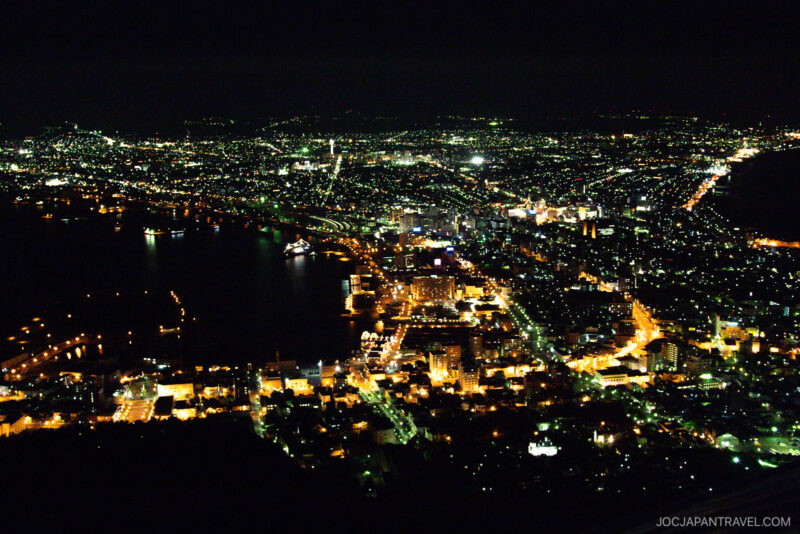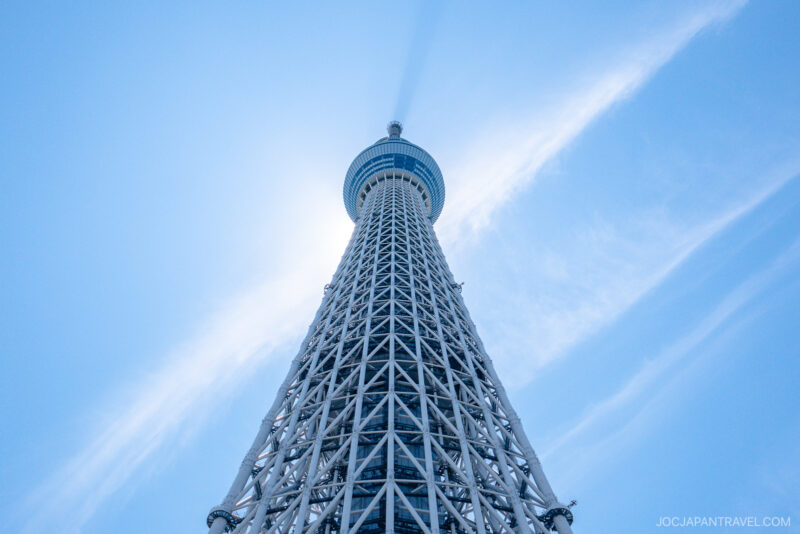This post may contain affiliate links. Please read our disclosure policy.
With its dramatic wooden gate and gleaming glass dome, Kanazawa Station is more than a transit hub. It’s a symbol of the city’s elegant mix of tradition and innovation.
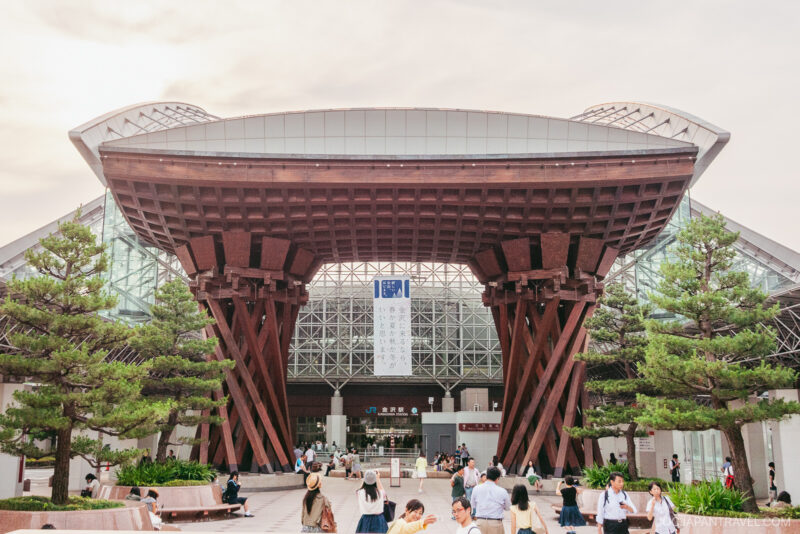
A Striking First Impression
Frequently listed among the most beautiful train stations in the world, iconic Kanazawa Station is where the city’s past and present meet in dramatic style. Its architecture fuses futuristic glass with traditional Japanese design elements, creating a bold and welcoming gateway to one of Japan’s most culturally rich cities.
Our Shinkansen Ride to Kanazawa
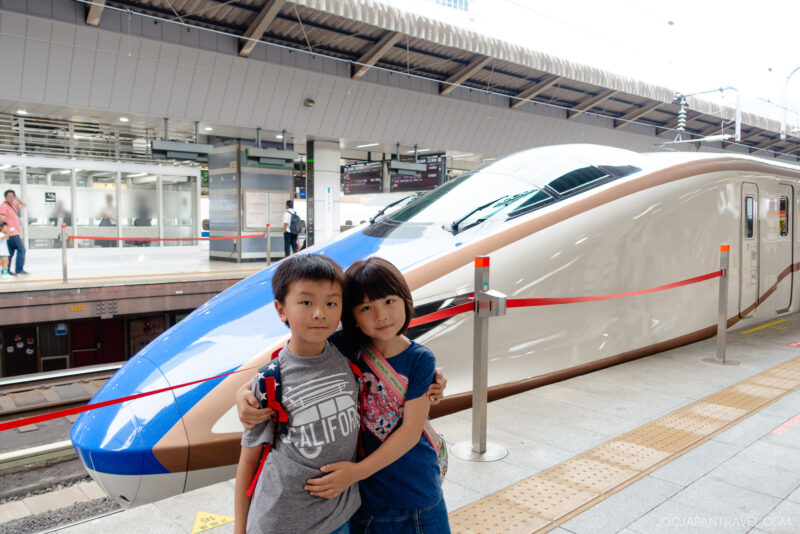
We traveled from Tokyo on the Shinkansen Kagayaki (かがやき) and the ride took just 2.5 hours, which felt surprisingly quick as we watched the countryside roll by.
Compared to the N700 series, the Kagayaki felt extra sleek. Each seat had a power outlet and an adjustable headrest, and the bathrooms were impressively modern. Even the sinks had separate nozzles for soap, water, and warm air-drying! We picked up a couple of ekiben before boarding and enjoyed them while passing through tunnels, rice paddies, and seaside towns.
A Warm Welcome at Kanazawa Station
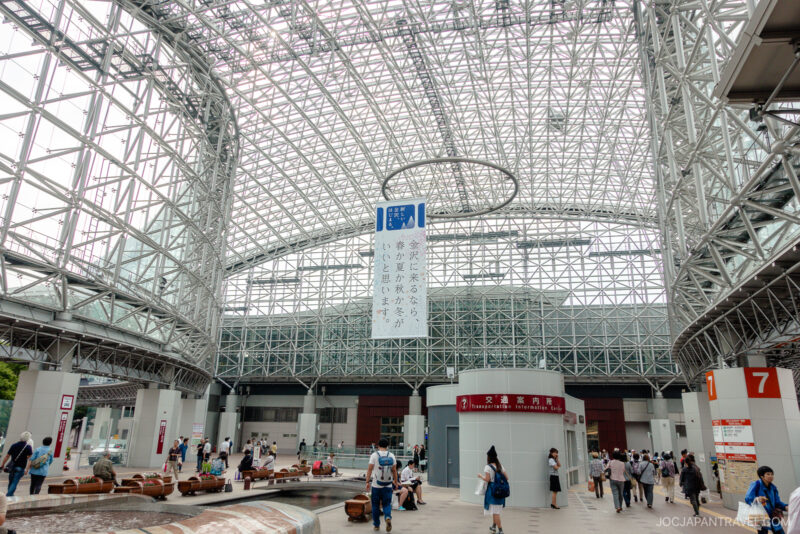
When we arrived, the station was bright and modern, with wide walkways and shops selling everything from matcha sweets to fresh seafood bento. But the true showstopper was outside: Tsuzumimon Gate.
This massive wooden gate, shaped like a traditional tsuzumi drum, is both symbolic and striking. Just beyond it, the Motenashi Dome, a sweeping glass canopy, stretches over the plaza like an open umbrella.
It’s the kind of place where you pause to take photos, even if you’re rushing to see the great sights the city has to offer.
Pro Tip: Use the Kanazawa Loop Bus to reach top sites like Kenrokuen Garden, Omicho Market, and the 21st Century Museum directly from the station.
Inside the Station: Food, Souvenirs, and Gold Leaf Ice Cream
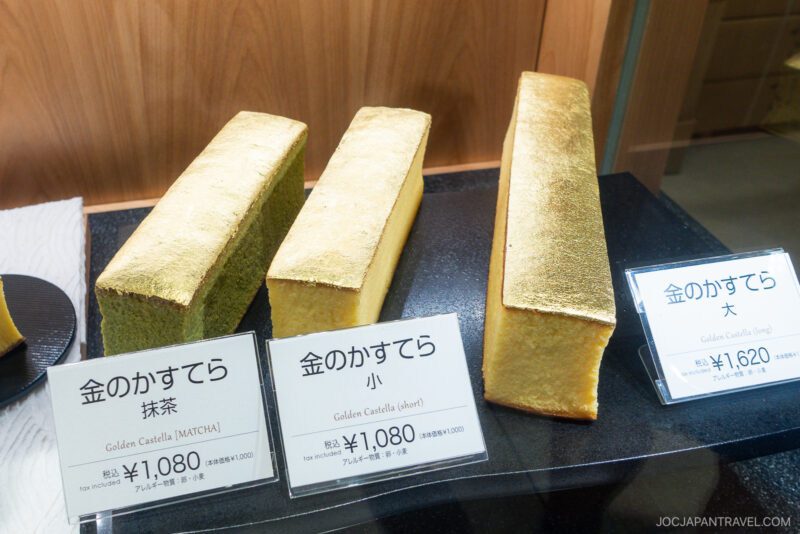
Kanazawa Station is more than a place to arrive and leave—it’s worth exploring on its own. We browsed shops offering local crafts like Kutani ware and gold leaf trinkets, and treated ourselves to gold-leaf-kasutera cake, a local specialty. It’s also a great place to buy omiyage before heading home—many stores offer beautiful gift boxes of Ishikawa’s famous sweets.
If you arrive hungry or need a break before sightseeing, there are plenty of casual eateries and cafes inside. Some even specialize in regional dishes like Kanazawa curry or seafood bowls.
Final Thoughts on Kanazawa Station
Of all the train stations we’ve visited in Japan, Kanazawa Station stands out as one of the most memorable. The bold Tsuzumimon Gate and graceful Motenashi Dome frame a beautiful sense of arrival, making you feel like the city is welcoming you in.
With plenty of shops and food stalls inside, it’s also a great place to relax or grab a bite before heading out to explore.
We’d say it’s more than just a transit hub—it’s a meaningful part of what makes the Kanazawa experience so special.
More to Explore Nearby
After arriving at Kanazawa Station, you’re just minutes away from the city’s best cultural and culinary highlights:
- Omicho Market (近江町市場) – Sample fresh seafood, local snacks, and Kanazawa’s food culture at this historic covered market.
- Kenrokuen Garden (兼六園) – One of Japan’s most famous landscape gardens, beautiful in every season.
- 21st Century Museum of Contemporary Art – Explore immersive, interactive art exhibits in a striking circular building near Kenrokuen.
- Kanazawa Castle Park – Stroll through restored castle grounds and learn about Kanazawa’s feudal past.


